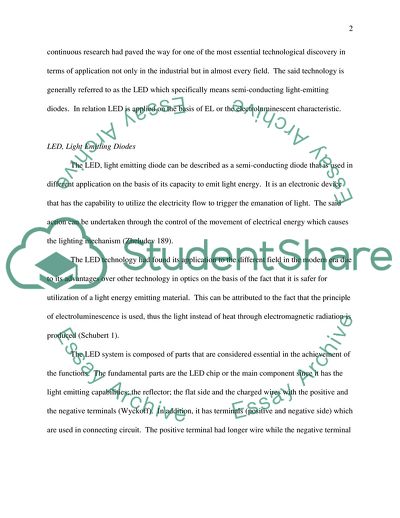Cite this document
(The Usage of LED's or Light Emitting Diodes and EL or Electro Coursework, n.d.)
The Usage of LED's or Light Emitting Diodes and EL or Electro Coursework. https://studentshare.org/engineering-and-construction/1714073-leds-or-light-emitting-diodes-and-el-or-electro-luminescent-history-of-controlling-features-practical-uses-in-live-theatre-energy-efficiency-and-future-us
The Usage of LED's or Light Emitting Diodes and EL or Electro Coursework. https://studentshare.org/engineering-and-construction/1714073-leds-or-light-emitting-diodes-and-el-or-electro-luminescent-history-of-controlling-features-practical-uses-in-live-theatre-energy-efficiency-and-future-us
(The Usage of LED'S or Light Emitting Diodes and EL or Electro Coursework)
The Usage of LED'S or Light Emitting Diodes and EL or Electro Coursework. https://studentshare.org/engineering-and-construction/1714073-leds-or-light-emitting-diodes-and-el-or-electro-luminescent-history-of-controlling-features-practical-uses-in-live-theatre-energy-efficiency-and-future-us.
The Usage of LED'S or Light Emitting Diodes and EL or Electro Coursework. https://studentshare.org/engineering-and-construction/1714073-leds-or-light-emitting-diodes-and-el-or-electro-luminescent-history-of-controlling-features-practical-uses-in-live-theatre-energy-efficiency-and-future-us.
“The Usage of LED'S or Light Emitting Diodes and EL or Electro Coursework”. https://studentshare.org/engineering-and-construction/1714073-leds-or-light-emitting-diodes-and-el-or-electro-luminescent-history-of-controlling-features-practical-uses-in-live-theatre-energy-efficiency-and-future-us.


